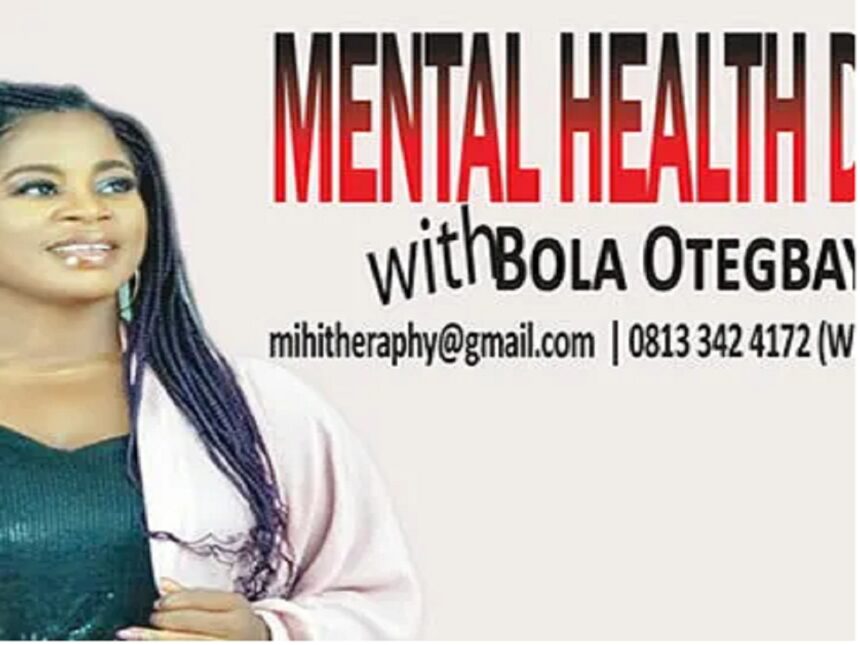It’s that time of the year again when we reflect, raise awareness, and remind ourselves that mental well-being is just as important as physical health. Healing starts with awareness.
As we mark Mental Health Week 2025, we are reminded that community plays a vital role in our journey toward wellness. This year’s theme, “Community: Supporting Mental Wellbeing Together,” emphasizes the importance of connection, compassion, and collective responsibility. Being part of a safe, understanding, and positive community can make all the difference, especially for those navigating the silent wounds of trauma. Today, we explore PTSD.
In the spirit of this theme, we continue our conversation on a topic that too often exists in the shadows, Post-Traumatic Stress Disorder (PTSD). Last week, we began to uncover what PTSD looks like in real life. We talked about how trauma leaves invisible wounds and how many walk around with pain that society often refuses to see or name. We discussed the silence, the shame, the societal ignorance, and the way people are told to “move on” when their minds are still trapped in moments they didn’t choose.
This week, as part of our Mental Health Diary, we go deeper. What exactly is going on in the brain when someone has PTSD? And what does healing really look like?
Scientifically, what’s happening in the brain is both fascinating and heartbreaking. When a person experiences trauma, especially something sudden, overwhelming, or life-threatening, the brain’s survival system kicks in. The amygdala, which is like the brain’s alarm system, activates the fight, flight, or freeze response. The heart races. The muscles tighten. The body prepares to survive. Ideally, once the danger is over, the prefrontal cortex steps in to calm things down and make sense of what happened. The hippocampus then stores the memory in the appropriate place so that the brain can recognize that the event is now in the past.
Read Also: FAAC: FG, States, LGs share N1.681trn April 2025 revenue
But in people with PTSD, this beautiful system becomes disrupted. The amygdala remains on high alert, as if the danger never truly ended. The prefrontal cortex struggles to regulate emotions or assure safety. And the hippocampus may shrink or misfile the traumatic memory, leading to confusion between what is past and what is present. The result? A person might feel panic while sitting in a safe room. They might avoid harmless places, people, or conversations because something about them reminds the brain of the danger. A loud bang, a particular scent, even the time of day, anything can act as a trigger, pulling them back into that frightening memory.
Their brain is not being irrational. It is doing what it believes will keep them alive. But when the alarm system won’t shut off, it robs the person of peace, sleep, trust, connection, and joy. That is the cruel grip of PTSD.
This is why healing must go beyond “just talking about it” or hearing phrases like “just be strong.” PTSD is not a weakness. It is a deeply rooted biological, psychological, and emotional response to trauma. And recovery requires care that reflects that complexity.
PTSD is real. It is diagnosable. And most importantly, it is treatable. There are evidence-based treatments that can help rewire the brain’s trauma response. One of these is trauma-focused Cognitive Behavioural Therapy (CBT) that helps people process the event and change harmful thought patterns.
Medication can also help regulate brain chemistry, especially for those experiencing panic, depression, or sleep disorders related to PTSD.
But healing is not only about clinical intervention. Sometimes, it begins with being heard. Being believed. Being allowed to feel without being rushed to “snap out of it.” When people are met with kindness instead of advice, the nervous system begins to learn what safety feels like again.
Safe relationships are medicine. Whether it’s a friend, a therapist, a partner, or a support group, having even one person who listens without judgment can help rebuild a shattered sense of safety and trust. Connection grounds us. It reorients us to the present and gently reminds us that we are not alone.
Support is powerful. It doesn’t have to be perfect or professional. Sometimes it’s just staying present when someone is falling apart. Sometimes it’s refusing someone’s shame. Sometimes it’s validating how they feel. Sometimes it’s not giving advice at all, it is just about giving space.
Healing from PTSD is not a straight line, and support is not a one-size-fits-all solution. Some people find solace in therapy, talking with a trained professional who helps them process the trauma and reframe how they see themselves.
In our culture, we have been taught to fear the word “mental.” It is often reduced to “madness” or shame. But mental health is not something that belongs in the shadows. PTSD, like any other mental health conditions, deserves attention, compassion, and understanding.
So this Mental Health Week, let’s not only talk about awareness, let’s practice it. Let’s remember that the person acting distant may not be rude. The person overreacting may not be fragile. They may be surviving something invisible.
If you or someone you love has experienced trauma, know this: healing is possible. It takes time. It takes support. And it is worth it.
PTSD is not a personal weakness, it is an injury. And it is best to protect a wounded heart.
As we mark Mental Health Week, let us remember that kindness is healing, and community is powerful.






